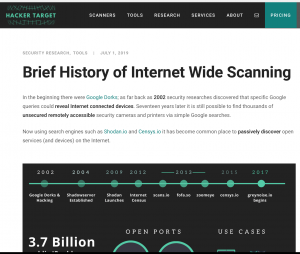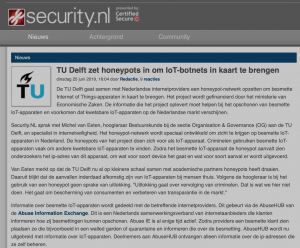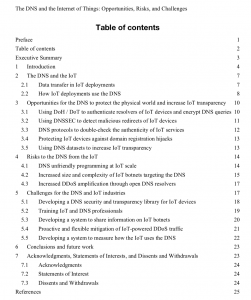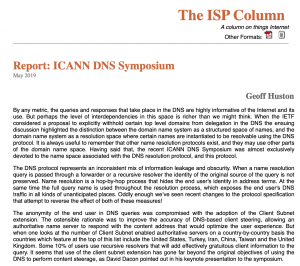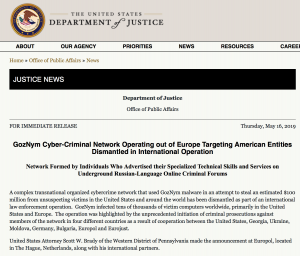A Brief History of Internet Wide Scanning
In the beginning there were Google Dorks; as far back as 2002 security researches discovered that specific Google queries could reveal Internet connected devices. Seventeen years later it is still possible to find thousands of unsecured remotely accessible security cameras and printers via simple Google searches. In 2004 the Shadowserver was started by a group of volunteers. Working from the principle that sharing Internet Attack Data can only enhance the overall security of the Internet they quickly became a primary source for security researchers. Over the years they have been publishing reports, sharing cyber crime data and scanning the Internet. With a focus on cyber crime they share reports of C2 services, DDOS botnet services and other attack based infrastructure.


